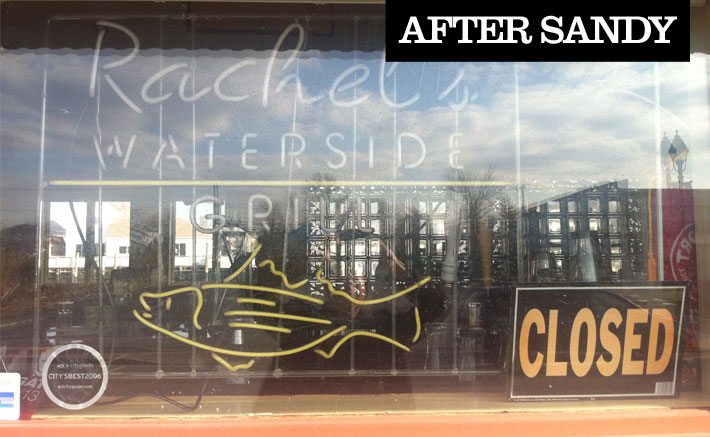
Editor’s Note: The numbers are staggering. The reality is heartbreaking.
Nearly 200 people throughout the Caribbean and Northeast are dead due to the destructive superstorm that was Hurricane Sandy, and the death toll for related tragedies continues to climb.
More than 8.5 million homes and businesses lost power across the East Coast due to Sandy’s wrath—including more than 1 million Long Island Power Authority customers. As of the publication of this week’s issue—in which the Press’ staff twice had to evacuate and relocate to complete; for Sandy and the Nor’easter Nov. 7—there remains nearly 200,000 LIPA customers across Nassau and Suffolk still in the dark, excluding the hardest hit areas of Long Beach, Fire Island and the Rockaways.
There are countless stories of misery and destruction, sadness and hope that have yet to be told about the lives forever altered due to Sandy’s catastrophic wrath. We at the Press have been doing our best to bring you the most pertinent and useful information, along with up-to-the-minute resources to help you get through it all, via our website www.LongIslandPress.com and Facebook profile www.Facebook.com/LongIslandPress.
We will continue to do so. Here are but a few more tales of endurance:
Lance Walker stands on his front lawn alongside the contents of his Lindenhurst home and weeps.
The ocean, he says, rose several feet high, inundating his house, engulfing his car and swallowing his entire neighborhood. Lashing winds whipped ferociously atop the sea, conjuring a wall of water that slammed his shoreline community with the speed of a freight train, uprooting trees, shredding power lines, pummeling homes and businesses and turning boats into missiles that hit structures with the terrific force of floating wrecking balls.
Tears roll down the 48-year-old’s face like empty thunder as he recalls the horrors of being trapped with his wife and four children in their modest ranch as the heavens decimated everything they and their neighbors have ever known.
His oldest daughter Ashley wraps her arms around him between gasps.
“After the wind blew the back doors open, the water came in and it was sort of like whitecaps,” he tells the Press. “It was sort of like a little tidal wave.
“It came in and it went out,” he says with a laugh, as if in disbelief. “It did its damage and it left and that was it.”
“We grabbed all we could, but all of our pictures and everything were under the beds and they evacuated everybody,” continues Walker. “We were rushing to get out of here, the humvees, the military was here, ‘You gotta leave, you gotta leave!’ So we forgot the pictures—15 years of pictures. But we brought them over to my mother-in-law’s house and we washed them and spread them out all over the floor and tried to dry them up. But all our home videos—it’s saltwater—and all of our birth certificates, everything: the car, my shed, all my tools in the back are done.
“There’s really nothing left,” he adds, wiping away tears. “We did what would could,” he said, his voice cracking. “I guess we didn’t do enough.”

The water-logged contents of Lance Walker’s home lie in heaps along Shore Road in Lindenhurst. The father of four says his insurance company AllState will not even return his phone calls. (Christopher Twarowski/Long Island Press)
Walker is not alone, but just one of countless survivors across the South Shore of Long Island whose homes, businesses, livelihoods and automobiles were absolutely annihilated when Hurricane Sandy’s outer bands pounded the tri-state area Oct. 29 with a storm surge yards high and wind gusts of up to 96 mph.
Nearly every street in the village of Lindenhurst resembles his, cluttered with water-logged couches and furniture, demolished appliances, cabinets, upholstery, wooden panels and countless other debris, remnants of lives once intact, now razed to shambles.
It’s as if someone detonated an atomic bomb on the banks of the Great South Bay yet somehow devised a way to spare most of the target’s inhabitants for further torture. As if the weather was a cruel sadist. As if the sky harbored an inhuman vengeance.
Photographs of family members lie amid wreckage. Boats hang upside-down from bulkheads or strewn atop one another against houses. A few blocks away from what’s left of Walker’s gutted home, the roof to someone else’s house sits on the side of the road beside a mangled Christmas wreath—stripped from another several hundred yards away like the popped cap of a soda bottle and tossed through the air like a gigantic Frisbee.
Walker’s is a shared misery, a communal suffering. Some residents’ homes were completely gobbled up by the sea, erased. Nearly 200 lives throughout the Caribbean, mid-Atlantic and Northeast were claimed by the storm, including at least five on Long Island.
Those souls aren’t lost on Walker. Amid his shattered world, he remains grateful.
“I ended up with maybe five feet of water,” he says. “But we’re all alive.”
Besides the rebuild-able property destroyed and irreplaceable life taken, now, more than a week since Superstorm Sandy’s fury, a new reality has emerged—one that’s not likely to pass any time soon. It’s a world of never-ending gasoline lines hundreds of vehicles deep wrapped around empty fuel stations. A world of no heat or electricity during frigid temperatures. A world of anxiety, paranoia, depression and frustration. Looters and National Guard troops. Police and thieves.
But there’s also a flipside to the chaos and disorder.
Because while Sandy has turned many communities into wasteland, it cannot snuff out the light of the human spirit.
Families are helping families. Neighbors are helping neighbors. Strangers are helping strangers.
As Walker relives the horror that nearly wiped out his entire family, several hundred people gathered just around the corner at Shore Road Park to barbeque donated food, distribute boxes of non-perishables, hand out clothes. Couples walk door-to-door passing out McDonald’s hamburgers and water. A local radio station sets up speakers and blasts music.








